A GUIDE TO THE WILDEST CARNIVAL CELEBRATIONS AROUND THE WORLD
- Uncategorized
-
Feb 19
- Share post

Carnival celebrations are a spectacle, filled with food, entertainment, live music and colourful, over-the-top costumes. With shimmering feathery headpieces and wooden shoes, it’s an event you won’t want to miss. For many, it’s a time to let loose and indulge one last time before the start of Lent. For others, it’s a way to reflect and celebrate the joy of life. But behind the debauchery, there’s also a rich history to many of these festivals, from masks that allowed people of lower classes in Italy to party freely among the rich to costumes believed to rid bad spirits in Africa. To help you navigate your next carnival celebration around the world, we’ve broken down 19 different parties and what to know before you go.
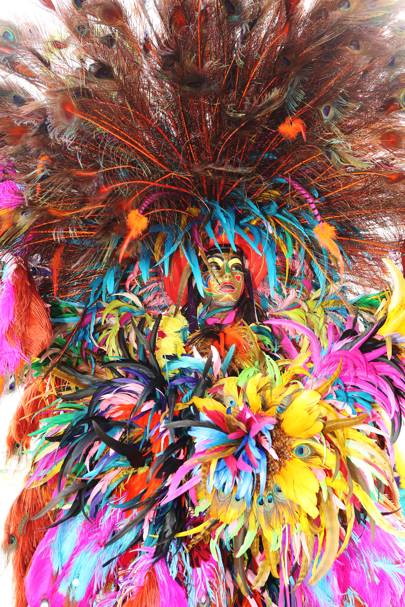
24–25 February 2020
Tradition: Trinidadians prepare all year to impress each other – and hundreds of thousands of onlookers – during the Caribbean’s biggest carnival, where custom-made swimsuit-like outfits, steel drums, local street food and dancing in the streets combine to ambush the senses.
Dress code: An important term to know is ‘playing mas’, which means dancing through the streets in a costumed carnival band. Those who want to be part of the parade have to join one of the bands (there are hundreds to choose from, and you can sign up to participate online). Your band will provide options on what to wear. If you don’t want to do that, join the street party for free in your own get-up or come dressed down in shorts and a T-shirt. Just make sure to opt for comfortable shoes and light clothing so you can party under the sun all day long.
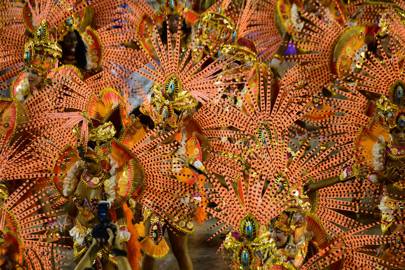
21–29 February 2020
Tradition: No country throws a party quite like Brazil, and there’s no Brazilian party quite like Rio Carnival. It’s the world’s largest carnival, attracting participants in the millions for a week of explosive, flamboyant, samba-shaking fun. There will be numerous events happening during the week, including informal street parades and the official Sambadrome parade (for the latter, make sure to purchase tickets ahead of time).
Dress code: Most performers wear elaborate costumes, usually made from scratch, but spectators often pick casual clothes for the Sambadrome parade, adding small accessories such as beads or feather masks. Keep in mind that during February the temperature is hot and humid, so festivalgoers in the street tend to dress for the weather in jean shorts, airy dresses and colourful shirts.
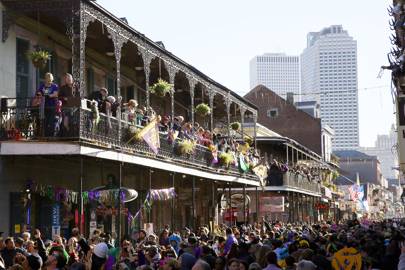
25 February 2020
Tradition: Fat Tuesday’s Mardi Gras has earned a reputation as the USA‘s ultimate street party, but New Orleans krewes (social organisations that plan parties and balls) celebrate year-round, especially in the weeks leading up to the annual event. The parades take place throughout different streets in the city and it’s important to note which routes are for walking and which are just for the floats to pass by.
Dress code: It’s part of the tradition to always wear the Mardi Gras colours – purple, green and gold – when not in costume. You’ll see thousands of beads and trinkets thrown to spectators from floats throughout the parades, many of which can be kept. You can also stop by the local shops to pick up traditional masks. Don’t forget to pack a light jacket – it tends to cool down a lot at night.
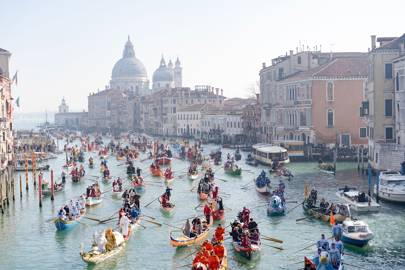
8–25 February 2020
Tradition: Decidedly more exclusive than its Western Hemisphere counterparts, Carnevale in Venice is less street shenanigans and more private galas and balls, where people are expected to arrive in over-the-top original costumes or masks. Tickets can be purchased on the festival’s official website.
Dress code: The majority of outfits worn during Carnevale reflect the attire of the Venetian noblemen and women, which makes the event feel similar to a huge historical re-enactment. One of the most legendary costume pieces is the mask – which originated from the ancient Greek and Roman festivals – such as the bauta, a popular white mask that has a square jaw line and no mouth. They were used as a way to disguise people from lower classes, so everyone could join in on the parties and events. You’ll be able to purchase these and other accessories from local stalls.
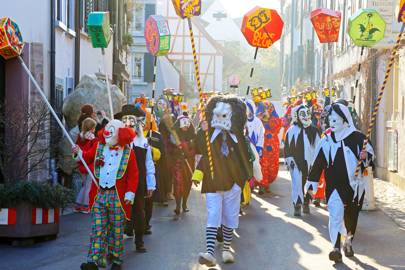
2–4 March 2020
Tradition: You might not peg the Swiss as the raucous type, but Basel’s carnival is one of Europe’s more notorious celebrations. Each year, an organised parade of some 20,000 revellers marches through the streets, decked out in costumes per the official theme of the year – but the real party begins when everyone branches off and embarks on their own bar crawls through the city, singing, acting and drinking for hours.
Dress code: If you are planning on attending, don’t dress up. Performers will be in head-to-toe costumes that conceal their identities, so participants like to have a clear distinction between them and the crowd. Following traditional customs, visitors are encouraged not to have any face painting, false noses or jester caps either. If you are travelling with kids, they can dress up during the children’s carnival, which takes place on 3 March 2020.
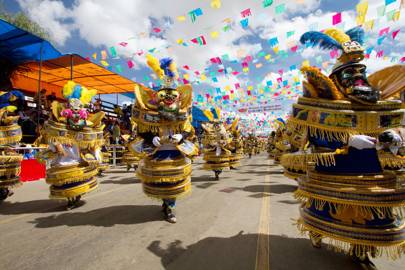
21–24 February 2020
Tradition: Bolivia’s headlining carnival event celebrates the indigenous culture and pays homage to the Virgin of Candelaria. It lasts for about 10 days and locals go big on the celebrations through the use of masks, textiles and vibrant embroidery. To get a good view of the performances it’s best to buy a ticket at one of the stands near the parade route. It’s a cultural anthropologist and photographer’s dream, as Oruro’s streets erupt with processions of interpretive folk dancing in devil costumes, known as the Diablada.
Dress code: The majority of the clothing worn is influenced by the traditional folk dancers who represent various indigenous groups. The most popular costume is El Tío (the devil), with thousands of people wearing horned masks, velvet capes and metal-like breastplates. If you plan on joining the fun, it’s best to come dressed down, not in costume, because you’ll get soaked throughout the celebrations. Partygoers use water balloons and pistols and spray foam as a way to celebrate good things to come. For those who don’t like the sound of getting wet, there will be street vendors selling colourful ponchos.
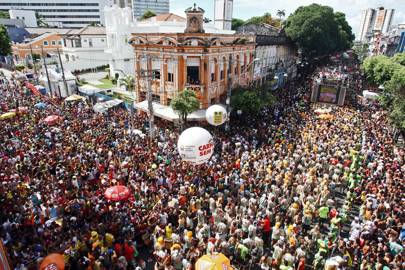
20–26 February 2020
Tradition: We love Rio Carnival, but for an experience with (slightly) fewer Americans and an Afro-Brazilian heartbeat, head to Salvador. The Bahian celebration is fuelled by the blaring sounds of the region’s famed trios elétricos – travelling live-music trucks – and very potent Caipirinhas.
Dress code: There are three different ways to celebrate Salvador Carnival, which will determine how to dress. You can dance on the streets with the crowd for free and wear whatever you want, but locals tend to wear T-shirts and shorts. If you prefer to watch from the sidelines, do so from a camarote, or cabin, located along the parade avenues. Tickets are required for this and most dress casually. Lastly, if you’d like to be part of the party and dance in the procession, buy a pass and T-shirt from one of the blocos – the groups participating – that you want to identify with.
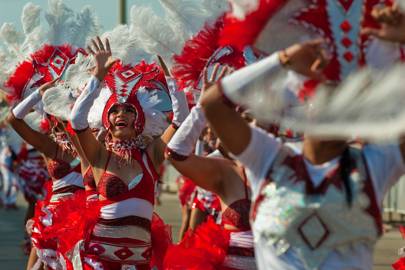
22–25 February 2020
Tradition: In the melting pot of Caribbean port city Barranquilla, African, Indigenous, European and Middle Eastern traditions come together at Colombia‘s largest carnival. The real reason to visit? This folkloric celebration is one of the biggest in the world, but attracts far fewer international tourists than its Latin American counterparts. All visitors are required to purchase tickets for the festivities, so the best thing to do is buy them in advance.
Dress code: In Colombia, visitors will have more fun if they dress up for the parade and fit in with the crowd. There will be numerous street markets all over Barranquilla where vibrant costumes and accessories can be picked up. Look for feather headpieces, face paint and colourful bottoms. It’s also important to prepare to get dirty. From foam to flour, you will inevitably get sprayed with something during the celebrations.
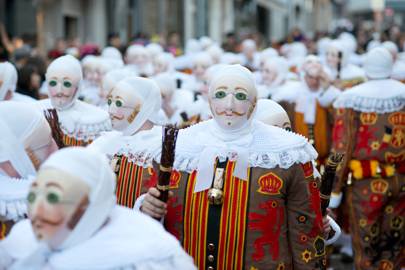
23–25 February 2020
Tradition: Even UNESCO, which recently gave carnival celebrations World Heritage status, agrees – the Carnival of Binche in Belgium is a particular standout in a country that loves to celebrate. Performers known as Gilles dress in elaborate feathery hats, and revellers bounce between cultural performances and unexpected rituals, such as throwing oranges for good luck, during the street parades.
Dress code: The costumes in Binche represent folklore characters and are worn to pay respect to old traditions. The most popular are the Gilles, clown-like mythical creatures characterised by their wax masks and wooden footwear. Because the carnival is precious to the locals, they forbid visitors from buying the Gilles costume, which can only be rented to official participants. As a spectator dress casually and you’ll have more than enough fun admiring creative outfits and tasting great food.
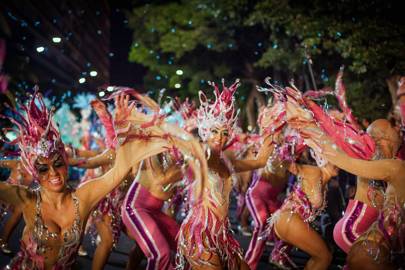
21 February–1 March 2020
Tradition: Looking for a two-week party? Head to Santa Cruz de Tenerife, whose streets explode in riotous celebrations for 15 days straight, with elaborately plumed costumes and masked revellers. There’s also the important annual selection of Carnival Queen, one of the main events, where candidates match around on a stage in the most glamorous and heavy outfits in hopes of winning the crown. This celebration is second only to the blockbuster events of Rio.
Dress code: In Santa Cruz, everyone is encouraged to dress up and join the massive street party. Come in an outrageous get-up covered with embellishments or purchase body paint, headpieces and accessories such as wings and hats from the local street vendors. You can also opt for more comfortable clothing, but everyone usually agrees that dressing up is the key to discovering what Carnival is all about.
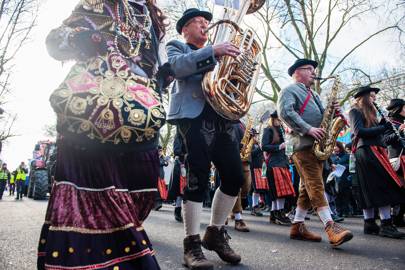
20–26 February 2020
Tradition: Düsseldorf Carnival is one of Germany‘s biggest, boldest and wildest parties leading up to Ash Wednesday. Anyone in town can count on street parades, rowdy bars and even a day of family-friendly festivities. The pinnacle event is always the Rose Monday parade, which has 5,000 costumed performers and satirical floats. Throughout the celebrations, partygoers will throw sweets and trinkets into the crowd.
Dress code: The first day of Carnival kicks off with women dressed up in witch costumes pretending to kidnap the mayor and take control of the city. After that, everyone is encouraged to dress up, with themes ranging from cultural and political to humorous.
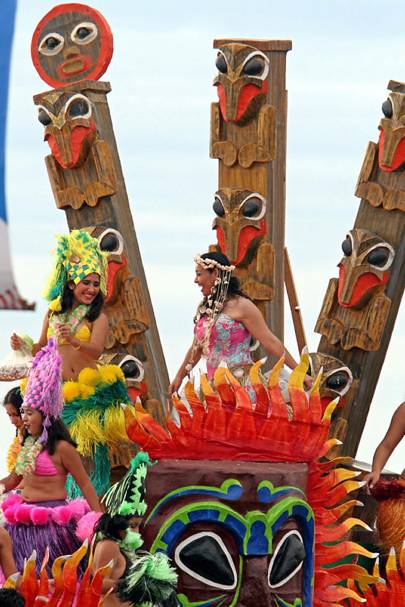
19–25 February 2020
Tradition: Although Día de los Muertos spurs the most well-known annual fiestas across Mexico, the country also deserves recognition for its myriad Carnival celebrations. Its largest, which takes place along Mazatlán’s Malecón, celebrates with enough incredible fireworks displays and live music to entertain families and lively partiers alike.
Dress code: If you are not planning to be part of one of the dressed-up bands in the Mazatlán Carnival, go casual, wear comfortable shoes and throw on some non-valuable costume jewellery such as shimmery necklaces and bracelets. It’s also good to bring a jacket, as it tends to get chilly at night.
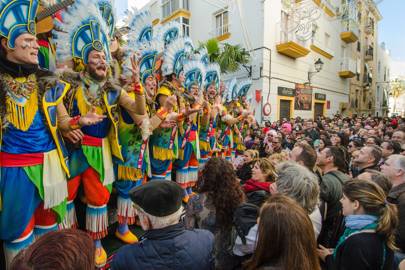 CÁDIZ, SPAIN
CÁDIZ, SPAIN20 February–1 March 2020
Tradition: In Cádiz, the party is just as big as other carnivals, with a completely different motive: purging society’s most pressing issues through parody and satire. Performers known as chirigotas display their clever costumes and whip-smart critiques of society through musical numbers.
Dress code: If you are heading to Cádiz for Carnival, dress up. There are no rules, so you can wear anything, as you would for Halloween, or purchase a costume from street vendors, who will be selling colourful masks, wigs and clothes. Just be sure to carry cash.
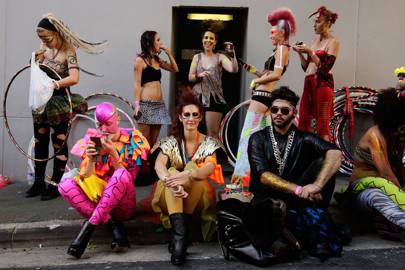 SYDNEY, AUSTRALIA
SYDNEY, AUSTRALIA14 February–1 March 2020
Tradition: Sydney LGBTQI pride plus Carnival equals the ultra-fabulous Sydney Gay and Lesbian Mardi Gras, an all-welcoming two-and-a-half-week festival – longer than most carnivals – that celebrates with parades, exhibitions, club nights and many a drag queen-attended party. Check out the various parties and events happening ahead of time to purchase tickets.
Dress code: Anything goes for Mardi Gras in Sydney, but many people choose to dress in drag, competing with the reigning queens. Plunging necklines, feather boas and body paint are very popular, though regular colourful clothing works as well. Pack items that will help to keep you cool and comfortable in the heat.
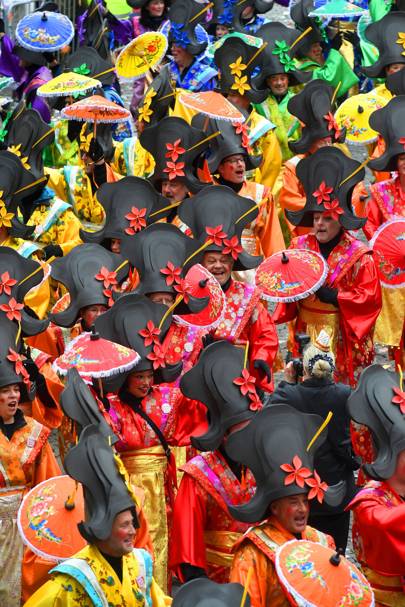 COLOGNE, GERMANY
COLOGNE, GERMANY20–26 February 2020
Tradition: In Germany, Carnival isn’t a festival – it’s a season. The revelry starts months before Ash Wednesday, culminating in several days of landmark events backing up to it. In the dizzying series of celebrations – Germany’s largest – expect to see drink-fuelled revellers parading through the streets by day, dressed as clowns, and flitting into bars and masquerade galas by night.
Dress code: The costume options for Carnival in Cologne are endless – you can pretty much wear whatever you want. But there are a few traditional outfits, one of them being the loveable fool. It’s mostly popular among the older generation and can be seen in variations of red-and-white-striped shirts, scarves and hats. Another go-to for locals are old-school clown costumes with red rag-doll hair and lots of polka dots. There will also be many street vendors and local stores selling accessories throughout the week-long celebration.
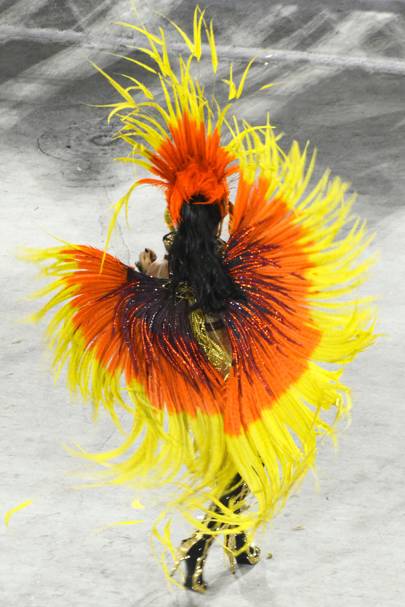 ST VINCENT AND THE GRENADINES
ST VINCENT AND THE GRENADINES6–7 July 2020
Tradition: Vincy Mas is the largest festival in St Vincent and the Grenadines celebrating the music, colour and food of the archipelago. It kicks off in late June and ends with two large street parties in July: J’Ouvert (which takes place on Monday) and Mardi Gras (the following Tuesday). Don’t miss traditional events such as the Parade of Bands, where all Masquerade Bands compete for the Band of the Year title. At the heart of Vincy Mas is the music, ranging from steel pan to calypso and soca, which is what makes the competitions, including the Soca Monarch, so fun. The parade takes place on the streets of Kingston and ends on stage at Carnival City.
Dress code: Like other carnivals around the world, Vincy Mas shaped its identity by combining different elements and customs from European and African festivals. The costumes worn in the parade are embellished with large neon feathers, headpieces and various attachments. Spectators should dress up in costumes as well, either purchased from a band or from the local stalls. There is also an annual evening street party known as Parade of the T-shirt Bands, where everyone comes dressed in T-shirts from their favourite bands and parades through Kingston.
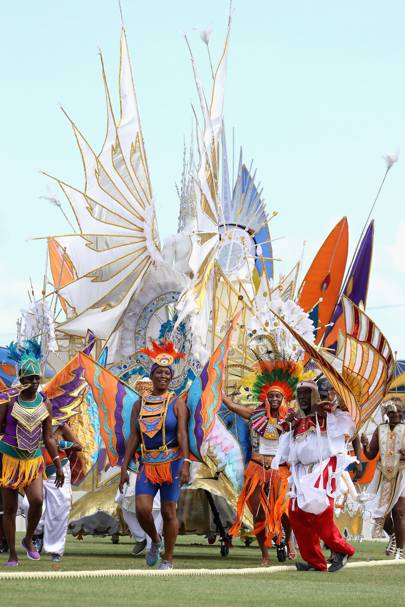 BARBADOS
BARBADOS29 July–4 August 2020
Tradition: The largest and most popular annual summer carnival in Barbados is Crop Over, thanks to the island’s own Bajan celebrity, Rihanna. A 200-year-old festival that celebrates the end of the sugarcane harvest season, Crop Over is not celebrated for religious purposes, but is considered part of carnival because of the Caribbean and African influences. It begins with an opening gala and ends on Grand Kadooment Day. There are also a few traditional annual events that lead up to the festival, including music competitions such as the Soca Royale, visual art exhibitions and endless street parties. Thousands of Bajans gather to parade in masquerade bands and dance along the Spring Garden Highway.
Dress code: The majority of today’s costumes are in the form of decorated two-pieces embellished with beads, feathers and body paint. If you are interested in finding a costume, rent or buy one from a website such as Island Zest. Most people like to dress up and fit in with the other festivalgoers, but wear whatever will keep you comfortable all day long.
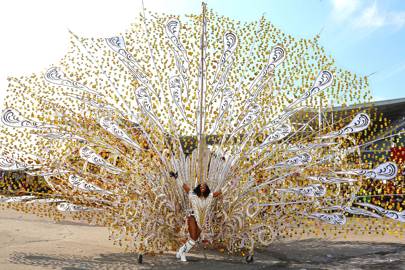 TORONTO, CANADA
TORONTO, CANADA30 July–2 August 2020
Tradition: The Caribana festival is one of the largest cultural celebrations in North America and began in the 1960s as one of the first Caribbean festivals held outside of the tropical region. It started as a way to share West Indian culture and traditions within the Canadian community. After months of preparation, the city welcomes thousands of masqueraders in colourful looks to make their way from Exhibition Place and along Lake Shore Boulevard. The grand finale happens on 1 August 2020, from 8.30am until 6pm. Make sure to book early because hotels fill up fast.
Dress code: During the parade, you will see a difference in costumes due to position. Those performing at the front of the line typically wear larger feathers, jewels and headpieces. People who are mid-line usually wear more gems, go lighter on the feathers and have bigger attachments such as wings. The back of the procession tends to go lighter on embellishments, which means it’s an easier place to move around than the front line. To be a part of the Caribana parade, plan in advance: pick out a band and purchase the official costume online. If you’re watching from the sidelines, wear a colourful top and shorts or a dress that will help to keep you cool throughout the day.
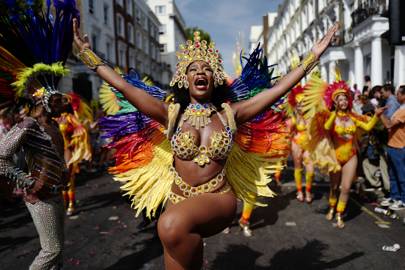 NOTTING HILL, LONDON
NOTTING HILL, LONDON30–31 August 2020
Tradition: What originally began as an offshoot of the Trinidad Carnival in the late 1960s has exploded into London‘s biggest street party – and a pride point for Caribbean immigrants in the city to show off their native cultures. Spectators can either join in the fun or watch as elaborate floats and colourfully costumed performers wind their way through the streets in the parade, dance to the sound of steel bands and calypso music and visit the various food stalls along the route.
Dress code: To enjoy the festival to the fullest, attendees are encouraged to wear accessories that show their support such as whistles, colourful hats and statement jewellery. But the most important part is to pack and wear comfortable, flat, closed-toe shoes. By the end of the day, the streets will be filled with litter and you’ll have to be careful where you step.
Source: cntraveller.com

